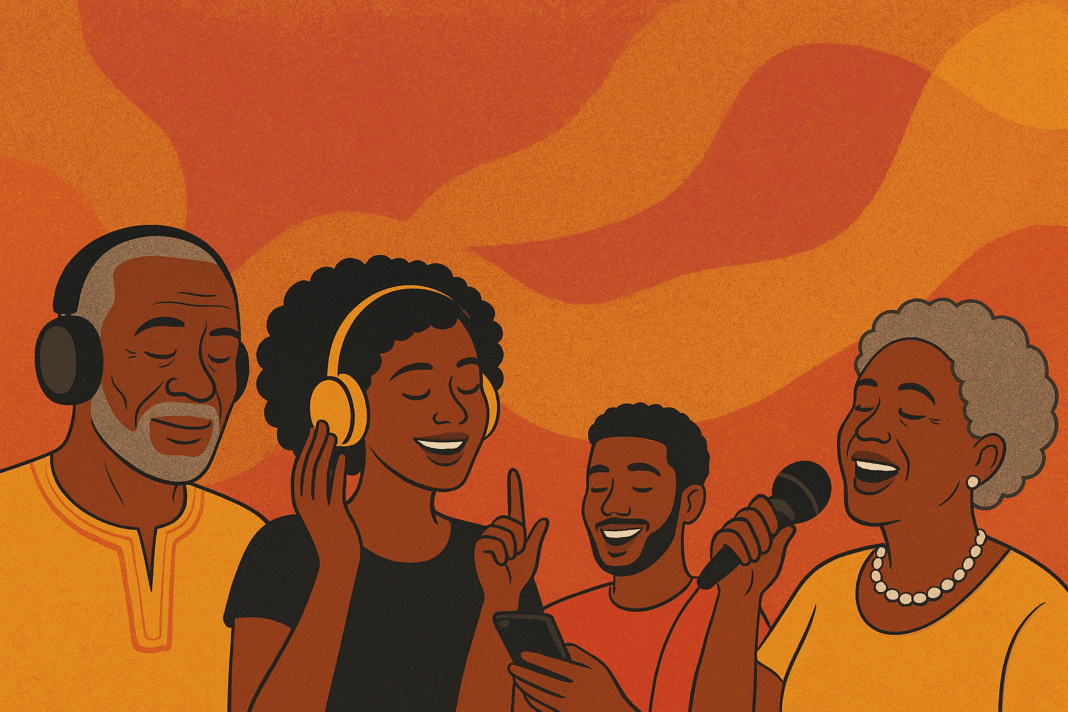Music has always had the power to connect people across time, cultures, and experiences. In Africa, this bridge is even more striking, where genres like Afrobeats, Highlife, and Amapiano don’t just entertain but serve as cultural connectors between generations.
From the days of palm wine music in West Africa to the booming beats of Afrobeats today, music has carried the stories, struggles, and celebrations of people while passing them on to younger generations who reshape them for their own time. It is not just about sound; it’s about identity, memory, and a shared sense of belonging that stretches from the elders to the youth, and now across the globe.
Highlife, which originated in Ghana in the early 20th century, is one of the earliest examples of African music blending local rhythms with Western instruments like the guitar, brass, and drums. It was the sound of independence movements, weddings, and everyday joy. Generations of Africans grew up dancing to Highlife, and it was also a way for elders to teach the younger ones about love, community, and social values.
Highlife’s storytelling style makes it a historical archive in itself, and even though the genre isn’t as dominant today, its DNA is present in modern sounds, making it a bridge that keeps older traditions alive in today’s music.
Then came Afrobeats, the modern evolution of Afrobeat pioneered by legends like Fela Kuti. Afrobeats, with its fast-paced rhythms, heavy percussion, and fusion of hip-hop, dancehall, and pop, has become the global sound of Africa. What makes Afrobeats powerful is how it resonates with both older and younger audiences.
Parents who remember Fela’s era can still connect with the political undertones and rhythms, while their children vibe to the playful, dance-ready tracks of Burna Boy, Wizkid, and Ayra Starr. Afrobeats has grown into an international phenomenon, shaping fashion, dance trends, and even how Africa is perceived on the world stage.
Amapiano, South Africa’s house-inspired sound, is the newest bridge in this musical journey. With its deep log drums, jazzy keys, and hypnotic beats, it has quickly spread from South African townships to dance floors in London, Lagos, and New York. Amapiano thrives on collaboration, with DJs and vocalists often coming together to create tracks that feel fresh yet rooted in South Africa’s heritage.
For younger generations, it’s the sound of creativity and freedom. Yet, its slower, more soulful side connects with older listeners who enjoy rhythm and groove. In this way, Amapiano brings families together, with everyone finding a layer of the music they can connect to.
What makes these three genres so important is how they don’t just stay within Africa—they travel and carry cultural pride along with them. When a teenager in Los Angeles or Paris dances to Afrobeats or Amapiano, they are indirectly learning about African creativity.
This global acceptance shows how music breaks down stereotypes and bridges gaps not just between generations but also between continents. African sounds that were once underestimated are now setting the standard for global music, proving that culture can be shared through beats and lyrics without needing translation.
In family gatherings, music becomes an even more obvious bridge. Imagine a wedding in Nigeria where elders demand Highlife classics from artists like Oliver De Coque, while the youth scream for Davido or Rema’s Afrobeats hits. A few hours later, a DJ sneaks in Amapiano, and suddenly everyone – young and old – is nodding, clapping, and moving together.
This is proof that music allows different generations to meet in the middle, building joy and togetherness that words alone could never achieve. It shows that while tastes evolve, the heartbeat of music still unites families and societies.
Another fascinating element is how new artists borrow from the past to create something fresh. Afrobeats stars like Burna Boy and Wizkid often sample Highlife melodies or beats, blending them with modern production. South African Amapiano artists do the same, adding elements of jazz or Kwaito to honor the past while keeping their sound current.
These choices aren’t accidental – they are deliberate bridges that acknowledge elders while keeping younger fans entertained. It’s a sign of respect and a reminder that today’s hits rest on the shoulders of yesterday’s legends.
Technology has also played a huge role in expanding these genres and their generational reach. Platforms like TikTok, Spotify, and YouTube allow young people to share snippets of their favorite tracks, which sometimes leads older family members to discover what the buzz is about.
At the same time, these platforms are also digitizing classics, making it easier for younger people to find and fall in love with old Highlife songs or Fela’s Afrobeat performances. This back-and-forth exchange deepens the bridge, ensuring music doesn’t get lost with time but continues to reinvent itself for every new listener.
On a deeper level, music as a bridge between generations reminds us of the shared humanity that binds us all. While generations may argue about fashion, technology, or politics, music is often where they agree. A grandfather humming an old Highlife tune, a parent nodding to Afrobeats, and a child dancing to Amapiano – this sequence paints a picture of continuity and cultural flow.
Each beat is like a handshake between the past, present, and future, ensuring that African identity and creativity remain alive and celebrated.
Ultimately, Afrobeats, Highlife, and Amapiano are more than just genres – they are cultural bridges that connect people across ages and geographies. They tell stories of resilience, joy, and innovation, while showing that music doesn’t belong to one era or one generation.
Instead, it travels, evolves, and unites. In a world that often feels divided, the universal power of these African sounds reminds us that sometimes, all it takes is a rhythm, a melody, or a beat to bring us together and remind us that we are part of one big, ongoing story.

